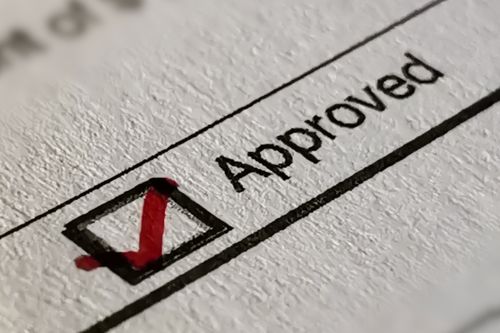Look-back Measurement Method & COVID-19
The coronavirus (COVID-19) pandemic has caused some confusion in applying the look-back measurement method during periods of layoff, furlough, and COVID-19 related periods of paid and unpaid leave. Federal agencies have not issued guidance regarding the ACA’s employer shared responsibility rules in light of the COVID-19 outbreak. Therefore, the general rules for determining employee status still apply.
Background
The Affordable Care Act (ACA) requires applicable large employers (ALEs) to offer affordable, minimum value health coverage to their full-time employees or possibly pay a penalty. This employer mandate is also known as the “employer shared responsibility” or “pay or play” rules. The evolving coronavirus (COVID-19) pandemic has caused some confusion and uncertainty in applying the look-back measurement method during periods of layoff, furlough, and COVID-19 related periods of paid and unpaid leave. The general rules for determining employee status apply. Please contact Bolton for more detailed information on look-back measurement method.
Special Unpaid Leave - FMLA Leave, USERRA Leave and Jury Duty Leave
The employer shared responsibility final regulations include a method for averaging hours when measurement periods include special unpaid leave—leave under the Family and Medical Leave Act (FMLA) or the Uniformed Services Employment and Reemployment Rights Act (USERRA) and leave for jury duty. This method only applies to an employee who is treated as a continuing employee upon resuming services for the ALE, and not to an employee who is treated as terminated and rehired. Under the averaging method, the ALE either:
- Determines the average hours of service per week for the employee during the measurement period excluding the special unpaid leave period, and uses that average as the average for the entire measurement period; or
- Treats employees as being credited with hours of service for special unpaid leave at a rate equal to the average weekly rate at which the employee was credited with hours of service during the weeks in the measurement period that are not special unpaid leave.
Rehired Employees and Employees Returning from Leave
The final regulations also include guidance for ALEs on how to classify an employee who earns an hour or more of service after the employee terminates employment (or has a period of absence). If an employee goes at least 13 consecutive weeks without an hour of service and then earns an hour of service, he or she may be treated as a new employee for purposes of determining his or her full-time status. The ALE may apply a rule of parity for periods of less than 13 weeks. Under the rule of parity, an employee is treated as a new employee if the period with no credited hours of service is at least four weeks long and is longer than the employee’s period of employment immediately before the period with no credited hours of service. For an employee who is treated as a continuing employee, the measurement and stability periods that would have applied to the employee, had he or she not experienced the break in service, would continue to apply upon the employee’s resumption of service.
Employer Action
Federal agencies have not issued guidance regarding the ACA’s employer shared responsibility rules in light of the COVID-19 outbreak. As a result, the general rules for determining employee status apply. Employers should continue to monitor media and news outlets for updates related to the coronavirus outbreak.
New COVID-19 Relief: Section 125 Mid-year Election Changes & Health FSA Rules
Background
On May 12, 2020, the IRS released Notice 2020-29, providing temporary flexibility for mid-year election changes and unused FSA/DCAP funds under a Section 125 cafeteria plan during calendar year 2020, and Notice 2020-33 which permanently increases the health FSA carryover limit for unused funds remaining at the end of a plan year. The changes are designed to allow employers to respond to changes in employee needs as a result of the COVID-19 pandemic.
The guidance relates to self-insured and fully insured employer-sponsored:
- Health plans
- Health flexible spending arrangements (FSAs)
- Dependent care assistance programs (DCAPs)
Permitted Election Changes
For employer-sponsored health coverage, a Section 125 cafeteria plan may permit an employee to prospectively:
- Make a new election if the employee previously declined coverage;
- Revoke an existing election and enroll in different health coverage sponsored by the employer; or
- Revoke an existing election, if the employee is or will be enrolled in other health
In general, the relief may be applied retroactively, to periods on or after Jan. 1, 2020. Employees may also prospectively revoke an election, make a new election or decrease or increase an existing election for a health FSA or DCAP. A plan may permit any of the election changes described in the notice, regardless of whether they satisfy existing mid-year election change rules. An employer can limit its potential financial exposure with respect to employees decreasing their FSA elections if the employer limits mid-year elections to amounts no less than amounts already reimbursed. This is specifically permitted in Notice 2020-29.
Health FSA & DCAP Updates
For unused amounts remaining in a health FSA or DCAP as of the end of a grace period or plan year ending in 2020, the plan may permit employees to apply those unused amounts to pay or reimburse medical care expenses or dependent care expenses, respectively, incurred through December 31, 2020. Effective for plan years beginning in 2020, the health FSA carryover limit for unused funds remaining at the end of a plan year permanently increases from $500 to $550 to reflect indexing for inflation. This is the maximum amount that may be carried over to the immediately following plan year beginning in 2021.
Employer Action
An employer, using Section 125 mid-year election relief or health FSA/DCAP extensions, may determine the extent to which such changes are permitted and applied. If these changes are permitted, the employer must adopt a plan amendment by Dec. 31, 2021, and inform employees of the change. The amendment pertaining to mid-year election changes may be retroactive to Jan. 1, 2020. An employer must also amend its Section 125 cafeteria plan to reflect the increased health FSA carryover amount for 2020, if the current plan language does not indicate amount indexing, no later than Dec. 31, 2021. Changes to the plan may also implicate other applicable laws, such as participant notification requirements under ERISA.
Extended ERISA Required Deadlines
Extended Participant Deadlines
The DOL and the Treasury issued a final rule to provide plan participants with additional time to comply with certain deadlines affecting COBRA continuation coverage, special enrollment periods, claims for benefits, appeals of denied claims and external review of certain claims.
The “final rule” extends the timeframes for health plan participants to:
- Request special enrollment under HIPAA;
- Elect COBRA continuation coverage, pay COBRA premiums and notify the plan of a COBRA qualifying event; and
- File benefit claims and appeals and request external review of denied claims. Additional details on the extended deadlines can be found here.
ERISA Notices and Disclosures
The DOL issued Disaster Relief Notice 2020-01 to extend the time for plan officials to furnish benefit statements and other notices and disclosures required under ERISA, so that plan sponsors have additional time to meet their obligations during the COVID-19 outbreak.
Accordingly, an employee benefit plan will not be in violation of ERISA for a failure to timely furnish a notice, disclosure, or document that must be furnished between March 1, 2020, and 60 days after the announced end of the COVID-19 National Emergency (provided this period does not exceed one year), if they act in good faith. This means the plan must furnish the documents as soon as administratively practicable under the circumstances. Good faith acts include use of electronic means of communicating with plan participants who the plan sponsor reasonably believes have effective access to electronic means of communication, including email, text messages and continuous access websites. Key notices and disclosures required to be furnished under ERISA include the following:
- Summary Plan Description (SPD)
- Summary of Material Modifications (SMM)
- Summary of Benefits and Coverage (SBC)
- Notice of Patient Protections
- Disclosure of Grandfathered Status
- Wellness Program Disclosure (HIPAA)
- Employer CHIP Notice
- Newborns’ and Mothers’ Health Act Notice
- Women’s Health and Cancer Rights Act Notices
Note that this list is not all-inclusive, and certain notice requirements may depend on a number of factors, including the type of benefits offered under the health plan.
Employer Action
Employers should consider seeking legal consult to determine the extent to which their ERISA governed plans may be impacted by these new guidelines.
- Fully Insured Plans: Employers should reach out to their consultants and/or insurance carriers about how the new guidelines may affect the administration of their
- Self-Insured Plans: Employers should work with their group administrators to ensure the proper implementation of the new deadlines, should they be
- COBRA Administration: Employers who administer COBRA should identify required changes to ensure all documentation and processes are updated to comply with the new
Employers must consider the impact to which adopting the new deadlines will have on their administrative and financial burden:
- Providing retroactive coverage on potentially uncollected premiums
- Disrupting automatic processes (special enrollments, COBRA, claims, )
Bolton’s team of experienced Benefits Consultants is here for you every step of the way as we navigate this new, unchartered territory.




